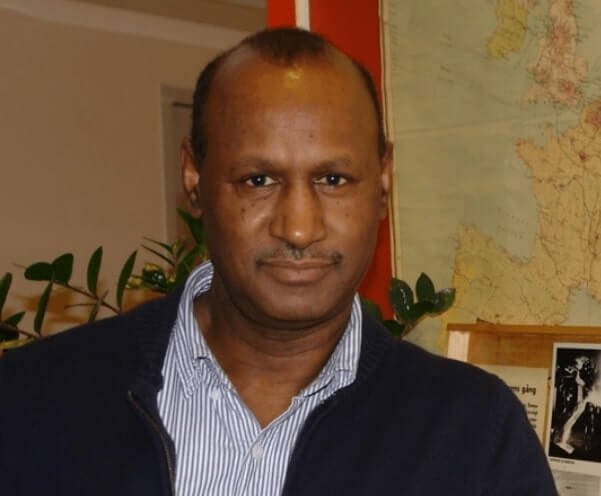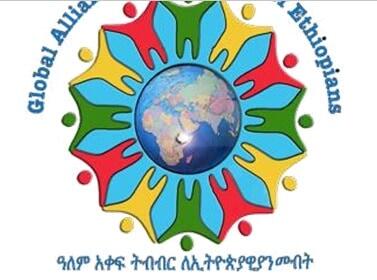Tsegaye Tegenu, PhD
2023-08-30
The context for preparing this strategic vision document is Ethiopia’s admission to the BRICS block at a time when the country faces sever challenges of social and political instability. BRICS offer trade and investment opportunities through the use of local currencies. Trade and financial transaction between countries, however, requires a conducive environment of macroeconomic and political stability to reduce uncertainty and risk. In Part One I will discuss the nature and root causes of macroeconomic and political instability in Ethiopia as background to the forthcoming economic strategic vision document, covering a generation, an average period of 20-25 years.
Chronic macroeconomic instability
Macroeconomic instability refers to a situation in an economy characterized by significant fluctuations and uncertainties in key macroeconomic indicators, such as GDP growth, unemployment rates, inflation, exchange rates, and fiscal deficits. In what follows, I will try to summarize the long-term patterns and trends of these common macroeconomic indicators.
Formulärets överkant
GDP Growth
In the past two decades Ethiopia has relatively registered notable economic growth. Real GDP growth between 2000 and 2019 averaged 8,8% while real GDP per capita in the same period was about 6,3%. But this economic growth is a result of public investment and debt in infrastructure. It was the service and construction sectors that benefited from the public investment. The service sector (41%), and not the manufacturing sector (7%) was the major driver of GDP growth. That means growth was not the result of structural transformation, namely reallocation of labor and capital from subsistent agriculture to manufacturing sector.
The relatively growth contribution of the manufacturing sector (7%) is not even a result of total factor productivity of the sector, (output per worker) which measures the technological efficiency of firms. The contribution was a result of heavy investment in tangible assets such as buildings and machinery. It is possible that inefficient firms with political connections have benefited from subsidized credit of the government development bank.
Economic growth, if taken as a goal, it means a rise in the goods and services available for consumption per capita, per person. The lack of structural transformation and absence of firm efficiency (misallocation of capital and labor) shows economic growth in Ethiopia is not sustainable.
Underemployment and Unemployment
In 2022, the total labor force in Ethiopia (the sum of all persons of working age who are employed and those who are unemployed) was 60 million. According to the IOM (2021), Labour and Migration Survey, the employment to population ratio is 59.5 percent. This means, 60 percent of the total population aged ten years and above are employed.
The majority of the employed person are in subsistence agriculture and informal economy. That means the majority of employment is not in commercial farming and manufacturing sector that follows established rules and contracts. In other words, 60 million employed persons in subsistence (land-based economy) and informal economy face challenges of providing their basic needs. Moreover, in such types of employment, workers are not fully utilizing their skills, education and potential, leading to suboptimal outcomes in terms of job satisfaction, income, and overall economic productivity.
The subsistence and informal economy do not have a potential for absorbing surplus labor. The survey result reveals the there are four million unemployed people in the economically active age group. The rate of unemployment in urban areas is 18 percent, with a higher unemployment rate amongst females (25 percent). The comparisons of unemployment between urban and rural indicate that unemployment is a predominant problem of urban areas more than rural areas.
General inflation
Inflation measures a rise in the overall price level of goods and services in a given economy. It is a decline of purchasing power of Ethiopian Birr. An item that cost 100 birrs in 1966 costs 11,128 birrs at the beginning of 2022.
Average annual inflation for Ethiopia between 2015 and 2019 was 11.3%; the corresponding figures for low middle-income countries and Sub-Saharan Africa were 3.4% and 4.4% respectively. Similarly, average inflation for 2018 and 2019 was 14%. In a country where a quarter of the population lives under the poverty line, double digit inflation puts significant strain on the livelihood of people, particularly on wage earners of the population whose income can rarely cope with inflation rates. High inflation also raises the real exchange rate, reducing the competitiveness of exports.
High inflation has remained a major source of concern in recent years. Several factors have contributed to the recent inflation, such as policy changes, increment in world price, drought and political instability in the region.
Currency Depreciation
Currency depreciation refers to a decrease in the value of Birr relative to US dollar and Euro in the foreign exchange market. Since the implementation of the floating exchange rate in the early 1990s, the Ethiopian Birr has been steadily depreciating. In 2010 the National Bank of Ethiopia devaluated Birr by 20%. In 2017 a second nominal devaluation took place; the government depreciate the birr currency rate by 15%. The government used exchange rate policy as one available tool to boost the growth of the country’s export sector and economic growth in the country. But this did not happen.
The Birr’s depreciation increased the existing demand for goods and there was no excess domestic capacity to meet the domestic and export demand. Instead, the devaluation measure raised the cost of production for state and private owned enterprises that rely heavily on imported intermediate/capital goods (inputs). More money was required to pay for the same amount of foreign goods. Not only that the birr’s depreciation worsens the country’s current balance of payments position, the measure did not lead to improved trade balances. As one study suggested “there is no significant gain from international trade to justify currency depreciation in Ethiopia”.
Budget Deficits and Government Debt
General government debt of Ethiopia refers to the debts of the federal government, regional states, municipalities and public sector institutions. According to the Ministry of Finance and Economic Development, Ethiopia recorded a Government Budget deficit equal to 4 percent of the country’s Gross Domestic Product in 2022.
The government debt in the period from 2000 to 2021 was between 7.7 billion and 58.9 billion USD. The highest level was reached last years at 60 billion US Dollar. Based on the number of inhabitants, this is a debt of 500 USD per person. Public expenditure is the main driver of government debt. According to one study “several big projects launched by the government of Ethiopia consumes more time and budgets than the allocated amount because of poor leadership and corruption”.
To sum up, high inflation, high urban unemployment, high underemployment, low wages, high fiscal deficit, low productivity trap and lack of structural transformation characterize the Ethiopian economy. Because these well-being and growth issues are not properly addressed, we have a situation of political instability.
Chronic political instability
Ethiopia has experienced significant political instability in its modern history. There were student movements and protest, a revolution, coup d’état, armed struggle of liberation movements, political repression, mass arrest and killings, ethnic conflicts, religious tensions, media suppression, corruption, etc. all leading to regime changes and disruption of institutions.
There are several factors contributing to the political instability in the country. The primary factor is the economic instability mentioned above. Household poverty, economic shortages, unemployment and economic stress led to dissatisfaction among the population. The demand for better economic condition was and is led by political elite obsessed with radical solutions, full control and regulation of the civil society and the market.
The second source of political instability is related to the collective behavior of the majority of Ethiopian political elite which has non-participatory culture. The political elite is obsessed with ideology, local identity, suspicion on claims and zero-sum cognition.
Since the middle of the 1990s, the political culture of the elite has coincided with the period of youth bulge, the third source of political instability. In youth bulge countries there is a potential for occurrence of conflicts if and when the proportion of youth bulge exceeds 20% of the adult population. In the case of Ethiopia, it is about 50% of the adult population.
Making the livelihood of youth bulge is directly dependent on resource entitlements such as rights to basic needs, economic assets and opportunities. Since entitlement relationships are embedded in power relationships, the political elite used the youth bulge opportunity to assume power and advance its own interest. The coincidence of youth bulge with the collective behavior of the political is another factor of political instability.
The fourth source of political instability is external enemies of the country and wars caused by geo-political factors such as the Red Sea coast, the Nile water and religion. The geo-political situation of the country has caused external aggression and threat since the second half of the nineteenth century. So long us the given geo-political situation exists, it is unavoidable to be preoccupied in building the fiscal and military base of the state and this will reinforce state functionality.
To conclude, the macroeconomic and political instability in the country have become chronic; they have persisted and extended over a long period of time. It is not possible to address them through short-term solutions and interventions. The situation requires a comprehensive approach involving root cause analysis, and formation of strategic vision and goals that address the complex and systematic issues over long period of time, covering a generation, an average period of 20-25 years.
Bibliography
UNDP (2023), From Debt to Development: What are Ethiopia’s Choices? Ethiopia: Working Paper Series. No.3.
Ethiopian Economics Association (2022), State of the Ethiopian Economy 2022/23. Retrieve from:
Ethiopian Economics Association (2021), State of the Ethiopian Economy 2020/21. Economic Development, Population Dynamics, and Welfare. Retrieve from
Human Rights Watch (2023), “They Fired on Us Like Rain
IOM (2023), Ethiopia National Displacement Report 16. Addis Ababa
IOM (2021), Labour Force and Migration Survey. Key Findings. Addis Ababa
Tiblets Nguse, Betgilu Oshora, Maria Fekete-Farkas, Anita Tangl and Goshu Desalegn (2021), Does the Exchange Rate and Its Volatility Matter for International Trade in Ethiopia? In Journal of Risk and Financial Management.
Tsegaye Tegenu (2010), Problems of Institutional Instability and Green Revolution Bureaucracy in Ethiopia.
Tsegaye Tegenu (2016), Youth Bulge, Policy Choice, Ideological Trap and Domestic Political Unrest in Ethiopia.

















